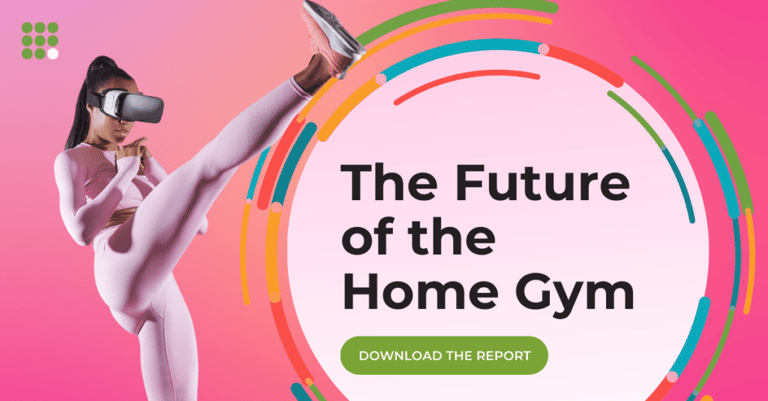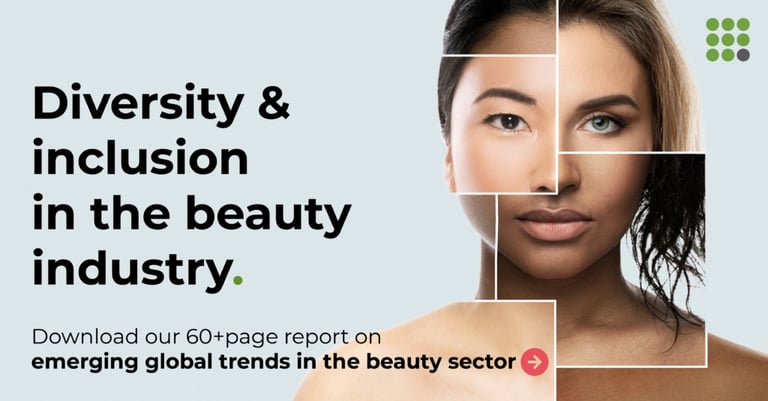The academic and business press may have criticized customer rewards for being cheap promotional tools and short-term fads, but they have been around forever, and more brands are embracing rewards programs rather than shying away from them. Many organizations are investing millions of dollars in creating and executing innovative rewards programs, ranging from frequent flyer offers by airlines to reduced fees by telecommunications companies to increase and retain their customer base.
Customer loyalty programs remain a popular marketing strategy brands use to increase customer retention and promote customer loyalty. These programs typically offer rewards, discounts, or other incentives to customers who make repeat purchases or engage in other loyal behaviors.
But do they really work?
In today’s business landscape, it is becoming increasingly common for senior leaders to request that their marketing teams evaluate the potential impact of loyalty marketing initiatives.
The fundamental question is whether such programs foster additional customer loyalty beyond what would typically result from the inherent value of the product or service offered. Additionally, brands must scrutinize their loyalty programs to determine whether they truly encourage customers to spend more or merely incentivize them to make repeat purchases. And in a highly competitive marketplace, are loyalty marketing programs a viable solution for every organization seeking to improve customer loyalty?
Engineering the economics of a loyalty program’s structure is key.
It is a well-known fact in business and marketing that retaining customers is more valuable than acquiring new ones, which is why rewarding frequent buyers makes sense.
So how can a brand go wrong with a simple loyalty program?
While you can get people to buy again from you by offering them rewards, how do you ensure you also profit when you get a repeat purchase?
This is where many loyalty programs fall short. A lot goes into creating an effective rewards program. First, it has to be good enough to change the customer’s behavior in your favor, and yet, it should not be so generous that it shrinks margins. You must also understand your consumers, as the same reward often encourages varying purchase behaviors.
Our research at Kadence has uncovered some patterns in successful and effective loyalty programs. These findings may be used as a toolkit to create a successful rewards program for any consumer-facing brand.
Let’s explore with real-world examples how to ensure the effectiveness of a customer loyalty program, but first, let’s dive into the origins of loyalty programs and how they work.
History and Origins of Loyalty Programs
The origins of loyalty programs can be traced back to the late 18th century when American retailers began offering customers copper tokens that could be redeemed for goods. However, it was in the 1980s that loyalty programs began to gain widespread popularity. American Airlines AAdvantage program is often credited as the first modern loyalty program, launched in 1981. Since then, loyalty programs have become an increasingly popular marketing tool brands use in various industries, from retail and hospitality to finance and healthcare.
What goals do loyalty programs strive to achieve?
While loyalty programs do not create an unwavering devotion or faithfulness to a brand in the true sense of the word, they can help accomplish many business goals. It is critical to start with a goal. What are we trying to achieve with the loyalty program? Is the goal to keep customers from moving to other brands, or is it to prompt customers to make additional purchases they would not have typically made, or is it to get a larger share of the wallet?
Once you know your goal, it’s easier to zero in on the most suitable loyalty program structure and engineer an economically viable rewards program.
For brands with a higher lifetime value, like a mobile service or internet provider, it is crucial to keep the customers from falling off into the hands of the competitor. The goal for such companies is often to create a loyalty program that makes the exit difficult for customers because of the incentives or point system.
How do loyalty programs work?
Customer loyalty programs are designed to encourage repeat business from customers by offering them incentives and rewards for their loyalty. The programs provide customers with points, discounts, freebies, or other rewards based on their level of engagement with a business or brand.
Customers typically sign up for the loyalty program by providing their contact information, such as name, email, and phone number. They then earn points or rewards by making purchases referring friends, or engaging with the brand in other ways.
As customers accumulate points or reach certain milestones, they can redeem them for rewards such as free products, discounts on future purchases, or exclusive perks.
Loyalty programs also provide businesses with valuable customer data, which can be used to personalize marketing messages, improve customer experiences, and tailor rewards to individual preferences.
Any customer loyalty program aims to foster long-term customer relationships, increasing retention and loyalty and ultimately driving revenue growth.

Many brands have recently flipped the script on tiered loyalty programs.
When T-Mobile, a wireless voice, messaging, and data services provider, sought a fresh approach to express gratitude for its customers’ support and rapid growth, it went against the tide. Seeing that traditional loyalty programs were a decent way to generate additional sales but a lousy way to thank customers, T-Mobile wanted to prove the brand’s loyalty to customers instead of the other way around.
The result was T-Mobile Tuesdays, a customer appreciation program that offered simple, easy access to free stuff and great deals every Tuesday without forcing customers to spend more with T-Mobile. It was a fresh take on loyalty programs that proved to be highly successful, with customers enjoying well over $1 billion worth of freebies and exclusive discounts in the five years since the program began. In contrast to most companies’ traditional loyalty programs that ask too much of their customers and give little back in return, T-Mobile’s program is unique in that it values and rewards all customers equally.
Many brands utilize loyalty programs to sell other products and services. This helps them set their sights higher to capture sales that would otherwise not be made. Multi-tiered rewards work best in this scenario. An increasing number of airline and retail brands use this reward system. Sephora has been very successful with its VIB program, which provides rewards and incentives commensurate with the value of purchases made within a given year.
A point-based system works well for the goods and services we frequently purchase in smaller quantities. Many hotels, grocery stores, and retailers use this system to reward customers based on points for every dollar spent. Customers are more likely to consolidate purchases with a single brand when rewarded in cash.
Well-thought-out rewards or loyalty programs also help brands access valuable customer data. So while many grocery store programs may not promote loyalty because they are just giving out a membership card for special pricing, they have a wealth of information about their customers, which allows them to customize offers for every customer. However, orchestrating the insights from data requires a substantial investment in data analysis tools and a dedicated team for the job.

How consumer psychology plays a crucial role in the structure and type of rewards program.
Numerous studies have indicated that members tend to utilize loyalty programs more frequently as they progress further in the program, while their participation initially is uncertain.
At the beginning of their membership, they may feel distant from the rewards since they have yet to make any progress and need to understand how achievable the goals are. This is where the principle of the endowed progress effect comes into play. The endowed progress effect states that people with artificial advancement toward a goal exhibit greater persistence toward reaching it. This is used to create effective loyalty programs to prevent customers from losing interest in the loyalty program. This is why many brands throw in bonus points to get them started.
While a growing number of brands offer a buy–ten-get-one-free promo to keep customers from going to competitive brands, it may be more valuable to create a program that provides customers a taste of something new and increases the range of products or services they buy from you. For instance, the US-based fast-casual chain Panera Bread offers a pastry or other such item to reward its regulars. Starbucks offers many different rewards, including free drinks, food items, and even merchandise, which must be redeemed within a period. This also helps promote the app as it helps keep track of the rewards.
Many airlines use this strategy and upgrade their travelers to business class when they have empty seats, which gives their regular customers a taste of luxury and motivates them to purchase in the future.
The importance of measuring the effectiveness of customer loyalty programs.
While customer loyalty programs can effectively increase customer retention and loyalty, they often fall flat. It is critical to measure the effectiveness of these programs to ensure they achieve the desired results. This is where market research comes in.
Market research is invaluable in devising the most effective loyalty programs and measuring their effectiveness.
Here are some reasons why measuring loyalty programs is essential:
Know the ROI of your loyalty program.
Measuring the effectiveness of a loyalty program allows companies to determine the Return On Investment (ROI) of their loyalty program. This helps brands understand the costs and benefits of the program and whether it is worth continuing or making changes.
Customer Retention.
If the program is not effectively retaining customers, brands may need to make changes to improve its effectiveness.
Customer Satisfaction.
This information can be used to identify areas for improvement and make changes to better meet the needs and preferences of customers.
Competitive Advantage.
A well-designed and effective loyalty program can provide a competitive advantage for companies. Measuring the program allows brands to understand how they perform compared to their competitors, make changes to improve their program, and stay ahead of the competition.
Customer Insights.
By tracking customer spending, engagement, and satisfaction, brands can better understand customers and make data-driven decisions about loyalty programs and other marketing initiatives.
How to use market research to measure the effectiveness of customer loyalty programs.
Customer loyalty programs are an effective way to increase customer retention and loyalty. However, it is essential to measure their effectiveness to ensure they achieve the intended results. Market research allows brands to make data-driven decisions that drive customer loyalty and revenue growth.
Step 1: Define Your Objectives.
The first step in measuring the effectiveness of a customer loyalty program is to define your objectives. What are you hoping to achieve with your program? Is it improved customer retention, increased customer spending, or something else?
Defining your objectives will help you determine the metrics you need to measure and the research methods you will use.
Step 2: Choose Your Metrics.
Once you have defined your objectives, you need to choose the metrics you will use to measure the effectiveness of your loyalty program.
Some standard metrics used to measure loyalty program effectiveness include:
- Customer retention rate: The percentage of customers who continue to do business with your company after joining your loyalty program.
- Customer spending: The amount of money customers spend on your products or services after joining your loyalty program.
- Customer satisfaction: Customers’ satisfaction with your loyalty program and your company overall.
- Referral rate: The number of customers who refer new customers to your company.
Step 3: Conduct Market Research.
Once you have defined your objectives and chosen your metrics, it’s time to conduct market research to measure the effectiveness of your loyalty program.
You can use several research methods, including surveys, focus groups, and interviews.
Surveys are one of the most common research methods used to measure the effectiveness of customer loyalty programs. Surveys can collect data on customer retention, spending, satisfaction, and referral rates. They can be conducted online, by phone, or in person and can be targeted to specific groups of customers.
Focus groups and interviews are also effective research methods for measuring loyalty program effectiveness. These methods allow you to gather more in-depth customer feedback and understand their experiences with your loyalty program.
Step 4: Analyze Your Data.
Once you have collected your data, it’s time to analyze it. Look for patterns and trends in your data and compare them to your objectives and metrics. This will help you understand your loyalty program’s effectiveness and identify improvement areas.
Step 5: Make Improvements.
Based on your analysis, make any necessary improvements to your loyalty program. This could involve changing your rewards program, improving your customer service, or making other changes to meet the needs and expectations of your customers.
Many brands are using market research to measure the effectiveness of their customer loyalty programs.
Examples of global brands doing rewards right.
Starbucks is known for its highly successful customer loyalty program, Starbucks Rewards. Sephora’s Beauty Insider Program is another successful loyalty program that uses market research to measure effectiveness. The Insider tier is free to join, while VIB and Rouge tiers require customers to spend specific amounts yearly.
Sephora’s tiered program is highly impactful due to the sense of exclusivity created by the upper tiers. Tiered programs are successful when the upper tiers have a limited number of members, typically around 10%. This way, the most loyal customers feel a sense of accomplishment, motivating other customers to strive for the same. Sephora’s Beauty Insider program segments customers into three groups: Beauty Insiders, VIB, and VIB Rouge, effectively establishing a hierarchy.
Tiers contribute to the gamification aspect of Sephora’s loyalty program and influence customer behavior, and motivating customers to strive for each new tier is the key to high engagement. Sephora has mastered this strategy, as evident from the feedback shared by its members on social media.
The program offers customers exclusive discounts, free samples, and other perks that align with its customer base. The brand also uses AI to make personalized recommendations.
In the retail world, Amazon Prime, US-based Target Circle, India-based Flipkart Plus, Japan-based Rakuten Super Points, China-based Tmall Super Member, Singapore-based GrabRewards, and UK-based Tesco Club cards are excellent examples, as are many frequent flier programs like the Southwest rapid rewards card.
Ensuring the effectiveness of a company’s loyalty program involves first defining its purpose. This entails meticulously considering the program’s design elements, including the rewards’ value and type and the methods of awarding and redemption. The key to a successful program is its efficient and consistent implementation.
Loyalty programs have come a long way since their inception in the late 18th century. From American Airlines’ AAdvantage program to the modern loyalty programs of today, these have become essential marketing tools brands use to increase customer loyalty and drive revenue. While expecting absolute loyalty may be unrealistic, businesses can achieve long-term relationships with satisfied customers, serving as a valuable competitive advantage. With the help of technology, loyalty programs are becoming increasingly personalized, sophisticated, and effective and are likely to continue evolving in the years to come.




